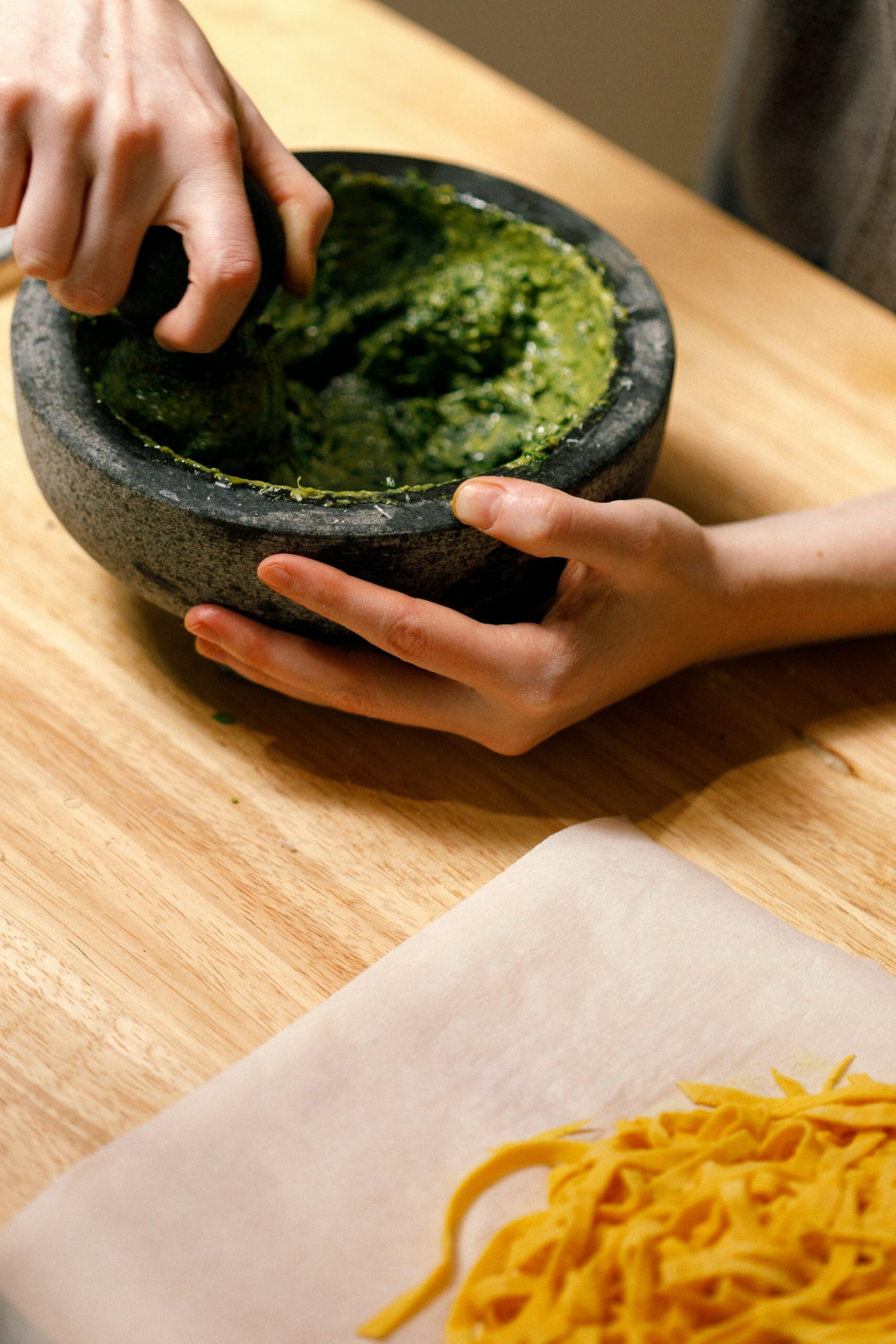
Pesto is a delicious and versatile sauce that can be used to enhance pasta, pizza, sandwiches, salads, and more. But how long does pesto last in the fridge and how can you tell if it’s gone bad? In this article, we will answer these questions and provide some tips on how to store, freeze, and use pesto to make it last as long as possible.
What is Pesto and How is It Made?
Pesto is a popular Italian sauce that is usually made from fresh basil leaves, garlic, pine nuts, Parmesan cheese, and olive oil. The ingredients are blended or crushed together to form a smooth or chunky paste. Pesto can also be made with other herbs, nuts, cheeses, and oils, depending on the region and preference.
How Long Does Pesto Last in the Fridge?
The shelf life of pesto depends on several factors, such as the type of pesto, the ingredients used, the packaging, and the storage conditions. Generally, homemade pesto lasts for about 3 to 5 days in the fridge, while store-bought pesto lasts for about 5 to 7 days after opening. However, these are only estimates and the actual shelf life may vary depending on the quality and freshness of the pesto.
To ensure that your pesto stays fresh and safe to eat, you should always check the expiration date on the label, store it in an airtight container in the fridge, and use a clean spoon to scoop out the amount you need. You should also avoid cross-contamination by not dipping food directly into the pesto jar or container.
How to Freeze Pesto for Longer Storage?
If you have more pesto than you can use within a week, you can freeze it for longer storage. Freezing pesto can extend its shelf life for up to 6 months, without affecting its flavor or texture too much. To freeze pesto, you can follow these steps:
- Divide the pesto into small portions, such as tablespoons or ice cubes, and place them on a baking sheet lined with parchment paper.
- Freeze the pesto until solid, then transfer the portions to a freezer-safe bag or container. Label and date the bag or container and squeeze out as much air as possible.
- Store the frozen pesto in the freezer and use it as needed. You can thaw the pesto in the fridge overnight or in the microwave for a few seconds before using it.
How to Tell If Pesto Has Gone Bad?
Pesto can go bad if it is stored improperly, exposed to air, moisture, or heat, or contaminated by bacteria or mold. Consuming spoiled pesto can lead to food poisoning, so it is important to know how to tell if pesto has gone bad. Some signs of bad pesto are:
- Change in color: Fresh pesto is usually bright green, but it can turn brown, yellow, or gray over time due to oxidation or bacterial growth. If your pesto has changed color significantly, it is likely spoiled and should be discarded.
- Change in texture: Fresh pesto is smooth or slightly chunky, but it can become watery, slimy, or dry over time due to separation or dehydration. If your pesto has changed texture significantly, it is likely spoiled and should be discarded.
- Change in smell: Fresh pesto has a pleasant and aromatic smell, but it can develop a sour, rancid, or musty smell over time due to spoilage or fermentation. If your pesto has a bad or off smell, it is likely spoiled and should be discarded.
- Change in taste: Fresh pesto has a fresh and flavorful taste, but it can become bitter, sour, or metallic over time due to oxidation or bacterial growth. If your pesto has a bad or off taste, it is likely spoiled and should be discarded.
- Presence of mold: Mold can grow on the surface or inside the pesto if it is exposed to air, moisture, or heat for too long. Mold can be white, green, black, or fuzzy, and it can produce toxins that are harmful to your health. If you see any mold on your pesto, do not scrape it off or try to salvage the rest. Discard the entire pesto immediately.
Summary
- Pesto is a delicious and versatile sauce that can be used to enhance various dishes.
- Pesto can last for about 3 to 5 days in the fridge if homemade, or 5 to 7 days if store-bought, depending on the type, ingredients, packaging, and storage conditions.
- Pesto can be frozen for up to 6 months for longer storage, by dividing it into small portions and storing it in a freezer-safe bag or container.
- Pesto can go bad if it is stored improperly, exposed to air, moisture, or heat, or contaminated by bacteria or mold.
- You can tell if pesto has gone bad by checking its color, texture, smell, taste, and presence of mold. If you notice any signs of spoilage, discard the pesto immediately and do not consume it.




